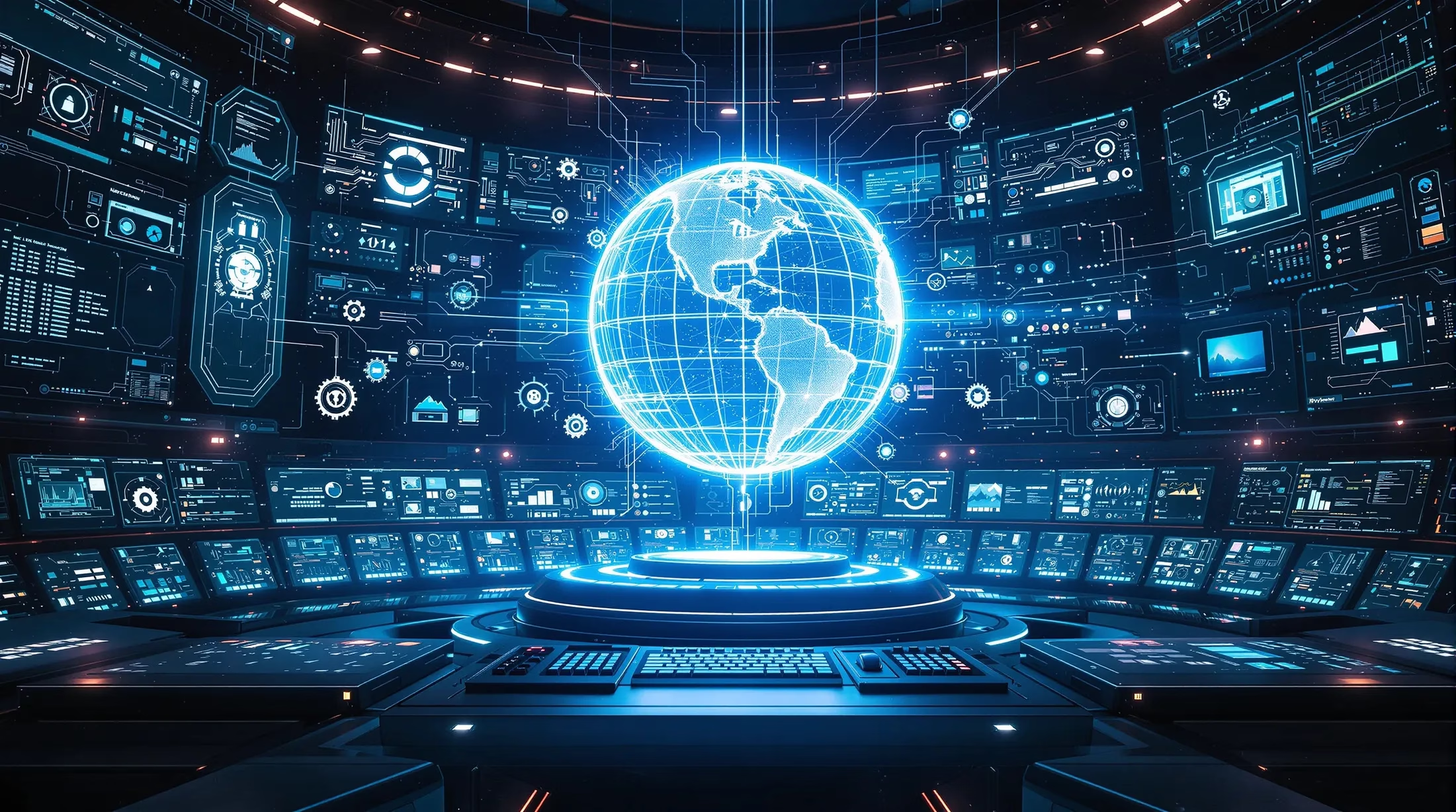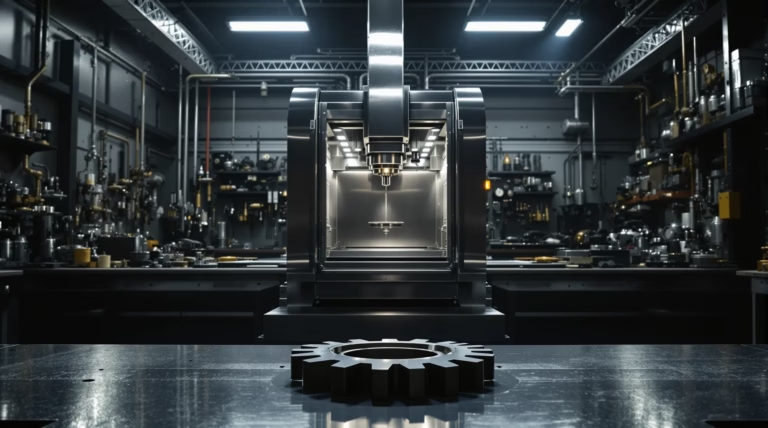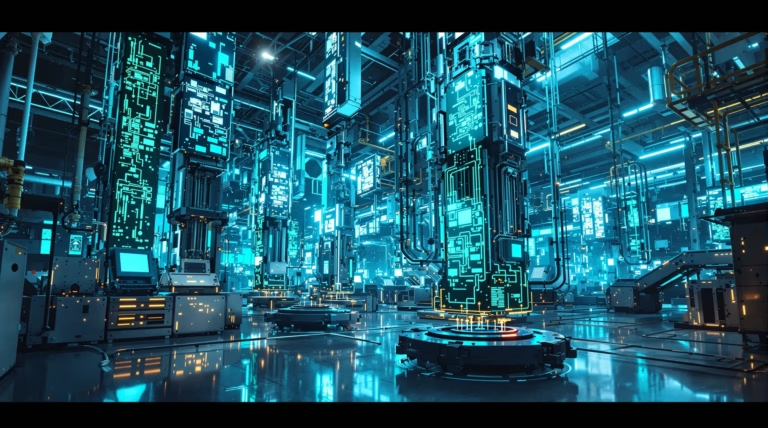Cyber-Physical Systems: Understanding Their Impact and Applications
Discover how Cyber-Physical Systems (CPS) are revolutionizing our world by creating an unprecedented bridge between digital technology and physical reality. These sophisticated systems are transforming industries, enhancing efficiency, and opening new possibilities for automation and control.
What are Cyber-Physical Systems?
Cyber-Physical Systems represent an innovative integration of computational algorithms, networking capabilities, and physical processes. Unlike traditional embedded systems, CPS creates a dynamic interaction between digital and physical elements, enabling real-time monitoring and control of physical environments through advanced computing technologies.
The power of CPS lies in their intelligent response to changing physical conditions through:
- Continuous data collection from physical environments
- Real-time processing of information
- Precise control actions execution
- Dynamic feedback loops
- Automated response mechanisms
Defining Cyber-Physical Systems
A Cyber-Physical System orchestrates the integration of computational algorithms and physical components through networked computing. The term itself reflects its dual nature – ‘cyber’ representing computational aspects and ‘physical’ denoting the natural or engineered systems being controlled. These systems range from basic monitoring applications to complex autonomous systems capable of self-adaptation.
Components of Cyber-Physical Systems
| Component | Function |
|---|---|
| Sensors | Collect environmental data (temperature, pressure, location, speed) |
| Communication Networks | Enable information exchange between physical and computational elements |
| Embedded Computing Devices | Process data and generate control commands |
| Actuators | Convert digital commands into physical actions |
| Control Software | Orchestrate system operations and implement decision-making algorithms |
The Evolution of Cyber-Physical Systems
The development of CPS marks a significant paradigm shift in how we interact with and control the physical world through digital means. These systems have evolved from simple embedded controllers to complex, interconnected networks capable of autonomous decision-making.
Historical Development of CPS Technology
The journey of CPS began with early embedded systems in the 1970s, but the formal concept emerged in the early 2000s. Key milestones include:
- 2006 – Official coining of the term “Cyber-Physical Systems”
- 2010s – Integration of wireless communication and cloud computing
- Implementation of artificial intelligence and machine learning capabilities
- Development of autonomous operation capabilities
- Integration with Internet connectivity for networked operations
Key Characteristics of Cyber-Physical Systems
Modern CPS exhibits several distinctive features that enable their revolutionary functionality:
- Reactive computation for continuous environmental interaction
- Real-time processing and response capabilities
- Robust operation in unpredictable environments
- Concurrent execution of multiple processes
- Decentralized decision-making capabilities
- Adaptive behavior based on environmental conditions
Applications of Cyber-Physical Systems Across Industries
Cyber-Physical Systems (CPS) have transformed operations across multiple industries by creating intelligent, responsive environments where digital and physical worlds seamlessly interact. These integrated systems leverage real-time data collection, advanced analytics, and autonomous control mechanisms to convert traditional processes into highly efficient, adaptive operations.
- Enhanced automation capabilities
- Improved resource allocation
- Data-driven decision making
- Increased operational efficiency
- Better product quality
- Enhanced safety metrics
CPS in Manufacturing and Industry 4.0
The manufacturing sector has experienced significant transformation through CPS implementation in Industry 4.0. Smart factories utilize interconnected systems that monitor production environments in real-time through comprehensive sensor networks.
| CPS Manufacturing Capability | Benefit |
|---|---|
| Predictive Maintenance | Reduces downtime and extends machinery lifespan |
| Digital Twins | Enables scenario testing and optimization |
| Production Flexibility | Allows quick adaptation to changing requirements |
| Autonomous Decision-Making | Facilitates dynamic resource allocation |
Healthcare and Medical Monitoring Systems
In healthcare, CPS revolutionizes patient care through advanced monitoring capabilities and intelligent medical devices. Remote patient monitoring systems enable continuous health tracking outside traditional clinical settings, using wearable sensors connected to cloud-based platforms.
- Real-time vital signs monitoring
- Automated alert systems for condition changes
- Robotic surgical assistance
- Smart medication delivery systems
- Intelligent prosthetics
- Resource optimization for hospital operations
Smart Cities and Infrastructure
Urban environments leverage CPS to enhance infrastructure management and improve citizen services. Smart city implementations utilize extensive sensor networks to monitor and optimize various urban parameters.
| Application Area | CPS Implementation |
|---|---|
| Traffic Management | Dynamic signal timing and congestion reduction |
| Energy Management | Smart grid integration and consumption optimization |
| Water Systems | Leak detection and demand-based distribution |
| Public Safety | Emergency response coordination and monitoring |
| Building Management | Environmental control and energy efficiency |
Technological Integration in Cyber-Physical Systems
The technological foundation of CPS represents a fundamental shift in computational and physical process integration. These systems create seamless connections through sophisticated feedback loops, enabling real-time monitoring and responsive control.
- Advanced sensor integration
- Distributed computing models
- Edge processing capabilities
- Sophisticated communication protocols
- Cloud-based analytics platforms
- Bidirectional communication systems
Technological Integration in Cyber-Physical Systems
Role of the Internet of Things in CPS
The Internet of Things (IoT) functions as the foundational infrastructure for Cyber-Physical Systems, enabling seamless communication between physical components and computational elements. While IoT specializes in device interconnection and data exchange, CPS builds upon this foundation by implementing sophisticated control mechanisms and real-time feedback loops.
- Synchronous communication between distributed components
- Real-time status monitoring through sensor networks
- Cross-organizational information sharing
- Dynamic operational adjustments
- Predictive maintenance capabilities
- Enhanced workflow optimization
Artificial Intelligence and Machine Learning in CPS
AI and ML technologies have revolutionized Cyber-Physical Systems by enabling autonomous and adaptive operations. Unlike traditional rule-based systems, AI-enhanced CPS can learn from operational data and optimize behavior independently.
| AI/ML Capability | Impact on CPS |
|---|---|
| Pattern Recognition | Identifies operational anomalies and trends |
| Deep Learning | Processes complex visual and sensor data |
| Edge Computing | Enables real-time decision making |
| Predictive Analytics | Optimizes resource allocation and maintenance |
Challenges and Risks in Cyber-Physical Systems
The integration of computational and physical elements in CPS presents unique technical challenges beyond traditional IT environments. These systems must balance complex mathematical abstractions with real-world operational requirements while maintaining security and reliability.
Security and Privacy Concerns
- Expanded attack surfaces at physical-digital intersections
- Real-world consequences of security breaches
- Complex data protection requirements
- Patient privacy in healthcare applications
- Location tracking and movement pattern security
- Specialized protection protocols for sensitive components
Interoperability and Standardization Issues
The absence of standardized protocols significantly impacts CPS adoption and integration. Organizations face substantial challenges when connecting components from different manufacturers or technological generations, leading to increased costs and reduced efficiency.
| Standardization Challenge | Impact |
|---|---|
| Protocol Fragmentation | Creates information silos and integration complexity |
| Vendor Lock-in | Limits component interchangeability |
| Update Complexity | Extends vulnerable component lifecycles |
| Integration Costs | Requires custom solutions for each deployment |
Future Trends and Developments in Cyber-Physical Systems
The landscape of Cyber-Physical Systems (CPS) continues to evolve rapidly, with transformative developments reshaping integrated technologies. Advanced computational capabilities and sophisticated physical components are driving the emergence of next-generation CPS architectures featuring enhanced autonomy, improved resilience, and unprecedented system intelligence. These systems are evolving beyond current paradigms toward self-adapting platforms capable of responding to complex environmental changes autonomously.
- Accelerated investment in CPS research and development globally
- Enhanced edge intelligence implementation
- Collaborative autonomy between distributed components
- Human-centered design approaches for transparency
- Cross-domain technology convergence
- Advanced system architecture development
Emerging Technologies and Innovations
| Technology | Impact on CPS |
|---|---|
| Quantum Computing | Enables complex physical modeling and optimization |
| Neuromorphic Computing | Facilitates human-like decision-making processes |
| Advanced Sensing | Improves sensitivity and energy efficiency |
| Soft Robotics | Enables adaptive physical properties |
| Synthetic Biology | Creates bio-hybrid sensing and processing capabilities |
Potential for Addressing Global Challenges
Cyber-Physical Systems demonstrate transformative potential across multiple domains, particularly in environmental sustainability and resource management. Advanced CPS implementations enable precision control that optimizes resource utilization, potentially reducing carbon footprints by 15-30% in various applications.
- Enhanced climate monitoring and response systems
- Distributed patient monitoring and health threat detection
- Intelligent transportation coordination
- Smart urban infrastructure management
- Precision agriculture and water system optimization
- Improved disaster resilience and response







